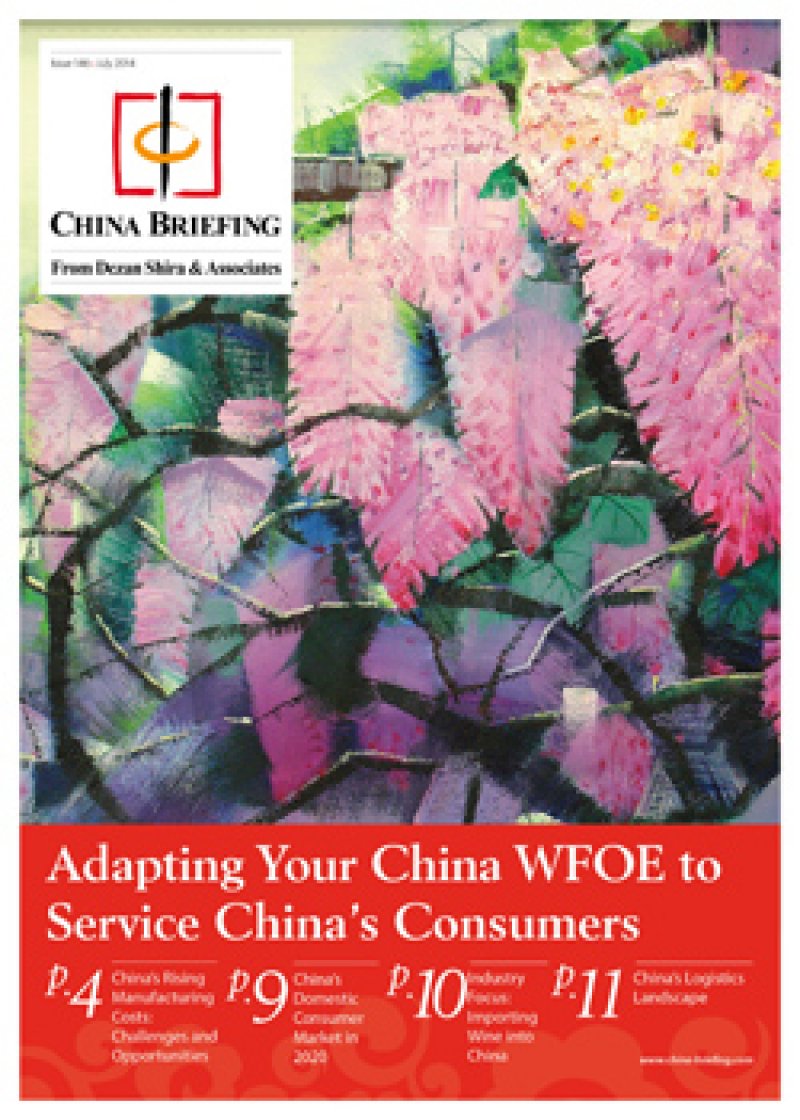
Adapting Your China WFOE to Service China's Consumers
Published: July 2014In this issue of China Briefing, we look at the challenges posed to manufacturers amidst China’s rising labor costs and stricter environmental regulations. Many foreign investors are relocating their factories in China to other countries. Manufacturing WFOEs in China should adapt by expanding their business scope to include distribution and determining suitable supply chain solutions, which will allow them to import goods manufactured elsewhere into China and sell to its market.
No. of Pages: 12 pages
In this issue:
- China’s Rising Manufacturing Costs: Challenges and Opportunities
- China’s Domestic Consumer Market in 2020
- Industry Focus: Importing Wine into China
- China’s Logistics Landscape
In recent years, China’s economy has been rapidly evolving and redefining itself, transitioning from the “world’s factory” into one of the world’s largest consumer markets. This is bringing a multitude of opportunities but also challenges to businesses, especially foreign investors in China. Businesses need to adapt their strategies in China and beyond, in order to succeed and better capture opportunities in this market.
In this issue of China Briefing, we look at the challenges posed to manufacturers amidst China’s rising labor costs and stricter environmental regulations. With costs of manufacturing rising in China and the China-ASEAN FTA now in place, many foreign investors are relocating their factories in China to other countries.
Meanwhile, China is striving to move up the value chain in manufacturing, as well as encourage domestic consumption in order to transform and rebalance its economy. Manufacturing WFOEs in China should adapt by expanding their business scope to include distribution and determining suitable supply chain solutions. This will allow them to import goods manufactured elsewhere into China and sell to its market.
In this regard, we will take a look at the opportunities in China’s domestic consumer market and forecast the sectors that are set to boom in the coming years. We also introduce the regulatory framework for setting up a wine import business in China, and provide a brief overview of China’s logistics landscape.

